2024 World Juniors: Evaluating Cutter Gauthier And Team USA's Forwards
2024 World Juniors: Evaluating Cutter Gauthier And Team USA's Forwards
Chris Peters breaks down the performance of each of Team USA's 13 forwards in the 2024 IIHF World Junior Championship led by Cutter Gauthier.
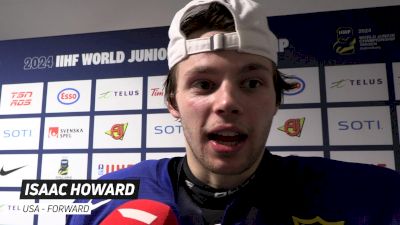
Team USA skated off the Scandinavium ice in Gothenburg with a gold medal, an unbeaten record and a tournament-high 45 goals scored. The expectation for that team is that they’d be able to out-score anybody and that proved to be more than true.
A lot of that is due to a forward group that including eight first-round picks among their top nine forwards, a fourth line that could threaten to score and a 13th forward that could be plugged in anywhere and find success.
As the dust has settled from the thrilling finale at the World Juniors, I’m here to provide a player-by-player breakdown for all of the NHL prospects on Team USA’s roster. Having followed the team from the summer camp, to the pre-tournament camp to every game at the World Juniors, my hope is to provide as complete an assessment on each individual player.
So let’s get started.
NOTE: Players are listed in order of points scored. Positions are based on the primary position they played in the tournament.
Cutter Gauthier, C, Boston College (PHI)
Stats: 7 GP, 2 G, 10 A, 12 PTS, 4 PIM, +9, 26 SOG, 17:21 TOI/GP
Gauthier had a very interesting tournament in that he’s known as a goal scorer, but the goals were not coming easy for him. He led Team USA in shots on goal with 26, but only two found the back of the net, one of which was one of USA’s biggest goals of the tournament. His late power-play snipe against Finland ultimately sent Team USA to the gold-medal game.
🚨 To quote #TeamUSA captain Rutger McGroarty... Goal scorers love to score.
— FloHockey (@FloHockey) January 4, 2024
Cutter Gauthier (PHI) puts the US 🇺🇸 ahead
3-2pic.twitter.com/LiI71c3M6x
The thing about Gauthier’s tournament, which was full of points because of so many assists, was that he impacted the game in a lot of ways. He won a lot of faceoffs, he used his size and strength to be disruptive in all zones, and was noticeable in every single game he played.
In the end, Gauthier was named the tournament directorate’s best forward, he was a media all-star and he was also my vote for MVP, though that award went to Sweden’s Jonathan Lekkerimaki (VAN), who would have been second for me if we were ranking candidates.
The most important thing we saw from Gauthier in this tournament was that he showed glimpses of why he can be a top-six center at the next level. He still gets his shots, he still can bully the opposition with a power game and his defensive capabilities have continually improved. If there’s an area to nitpick, it’s that he can force a lot of plays that aren’t there still. However, he has the puck so much, you take the good with the bad because there’s often a lot more good.
Gavin Brindley, RW, Michigan (CBJ)
Stats: 7 GP, 6 G, 4 A, 10 PTS, 0 PIM, 16 SOG, 16:47 TOI/GP
In the early stages of the tournament, he was USA’s best and most consistent forward. In the latter stages, he played his role perfectly and gave USA impactful shifts in every game even if the goals weren’t coming as easily.
Brindley was an all-situations player for USA, both on the power play and penalty kill while also being an absolute menace at five-on-five. Speed is a weapon, but speed with skill and tenacity is lethal. That’s what Brindley showed. He finished tied for second on the team with 10 points, and his line with Frank Nazar and Isaac Howard gave Sweden fits in the finale.
The reason Gavin Brindley is going to defy projections tied to his lack of size is because he has elite speed, but he plays every game hard and at the same pace. Players like him find a way. He may not be a star in the NHL, but he’s going to help teams win games.
Gabe Perreault, LW, Boston College (NYR)
Stats: 7 GP, 3 G, 7 A, 10 PTS, 2 PIM, +4, 8 SOG, 14:05 TOI/GP
One of the smartest young players out there, Perreault got better and better as the tournament progressed. Seven of his 10 points came in the playoff round with three in the gold-medal game alone.
Perreault had been relatively quiet in the early stages of the tournament, even though he had assists in each of the first three games. But he’s always around the puck and always looking to make plays.
He still needs to get stronger and quicker to improve his pro projection, but his brain – particularly in his anticipation and vision – is absolutely elite. There were so many great puck touches and decisions from Perreault throughout the tournament. Defensively there are still gaps and sometimes the energy he plays with wanes, but every time you look at the scoresheet, he’s all over it.
Isaac Howard, LW, Michigan State (TBL)
Stats: 7 GP, 7 G, 2 A, 9 PTS, 0 PIM, 24 SOG, 15:00 TOI/GP
What a resurgent year this has been for Howard, who really didn’t have a great first year of college last year. Now at Michigan State, he’s rediscovered his game and we got a full glimpse of it at the World Juniors. Howard led Team USA with seven goals including two big ones in the gold-medal game. His go-ahead goal to make it 2-1 was just so darn smooth.
🚨He's just gonna put that puck riiiiight past ya
— FloHockey (@FloHockey) January 5, 2024
Isaac Howard (TBL) with his first of the night 👀
2-1 🇺🇸#WorldJuniors #TeamUSA pic.twitter.com/yUehvEo634
Playing on a line with two work horses like Frank Nazar and Gavin Brindley really suited Howard, who could be a little more of the finisher than the driver. He has a good shot, good hands and there’s enough quickness there that he can challenge defenders. It looks like he’s back on track after a down season.
Rutger McGroarty, LW, Michigan (WPG)
Stats: 7 GP, 5 G, 4 A, 9 PTS, 10 PIM, 22 SOG, 16:58 TOI/GP
The fact McGroarty was healthy enough to play was a miracle in itself considering he had sustained an internal injury that left him hospitalized for more than a week back in November. That McGroarty was able to make enough of an impact to finish tied for fourth in USA scoring is just nuts.
He definitely needed a few games to get his game legs back under him, but by the second half of the tournament, McGroarty was playing a leading role. He had a hat trick against Slovakia in a game USA needed to win for first place in their group and two points in the gold-medal game.
McGroarty leveled up in the medal round and was able to play more to his identity, being physical, making plays down low and getting good shots away. He looks like he’s fully recovered and on a great trajectory for the rest of the year.
Will Smith, C, Boston College (SJS)
Stats: 7 GP, 4 G, 5 A, 9 PTS, +4, 15 SOG, 14:36 TOI/GP
There were moments in the tournament where you wanted to see more from Smith, but he continually delivered in big spots for Team USA and collected six of his nine points in the medal round. He set up USA’s first goal in the gold-medal game and scored a big one himself in the semifinal.
The way USA was structured, Smith was essentially USA’s No. 3 center and on their second power play unit. Despite limited minutes compared to his norm, and a different role, he found a way to deliver which is a great sign for the future.
Defensively, there is still some legitimate concern about him to handle those elements of his center responsibilities, but if there’s an area he’s taken a big step in, it’s faceoffs. He had the second-best faceoff percentage in the tournament at 65.1%.
Otherwise, Smith can look back on a very successful World Juniors and look ahead to potentially being part of another one next year.
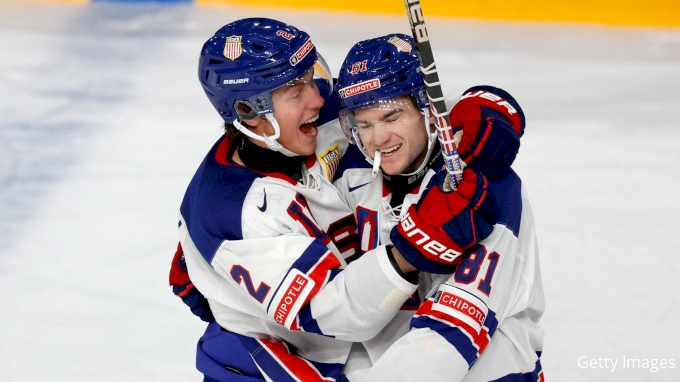
Jimmy Snuggerud, RW, Minnesota (STL)
Stats: 6 GP, 5 G, 3 A, 8 PTS, 2 PIM, +7, 17:33 TOI/GP
A four-point game against Switzerland was the big highlight until Snuggerud drilled a one-timer to break open the U.S. scoring against Finland and spark a comeback in the semifinal. He also scored USA’s first goal of the tournament and was able to help USA set the tone in games.
USA moved Snuggerud all over the lineup because he missed a game with illness, but in the most critical games, he was with his regular linemates of Rutger McGroarty and Cutter Gauthier. That line was critical to USA’s success in the second half.
Snuggerud can impact the game in a lot of ways beyond scoring. He has a good work ethic off the puck and has some physicality that helps. His lack of relative footspeed was a bit more evident in the tournament at times, but there’s always a consistent effort and he has tremendous finishing ability.
Frank Nazar, C, Michigan (CHI)
Stats: 7 GP, 0 G, 8 A, 8 PTS, 2 PIM, +9, 15:34 TOI/GP
Nazar had a big tournament even without scoring a goal. The eight assists are one thing, but the quality shifts he gave USA game in and game out at both ends of the ice are probably more the story about Nazar’s tournament. His line became USA’s No. 2 line and they got a lot of the tougher defensive assignments, while also being relied on to produce.
Nazar didn’t have any point in the medal round, but his line also didn’t allow the opposition much of a chance to score when they were on the ice. Being able to impact the game without scoring is critical to a center’s role and Nazar was able to do that.
Ryan Leonard, RW, Boston College (WSH)
Stats: 7 GP, 3 G, 3 A, 6 PTS, 4 PIM, +2, 17 SOG, 14:29 TOI/GP
Scoring the dagger goal in the gold-medal game is a signature moment of his tournament, but I’ll remember Leonard’s 2024 WJC for the beating he took from the opposition. He was a thorn in the side of the opposition and teams were always going after him during play, after the whistle. They just hated him. So whatever it was he was doing, it was working.
Leonard plays on the edge, but then he has the skill and shot to hit you on the scoreboard, too. That’s what he did in the tournament. He cleared a lot of space for Perreault and Smith, while taking advantage of his own chances including that tremendous goal in the gold-medal game.
Ryan Leonard with a HUGE insurance goal for Team USA#WorldJuniors pic.twitter.com/W72NgwO7h6
— TSN (@TSN_Sports) January 5, 2024
Oliver Moore, LW/RW, Minnesota (CHI)
Stats: 7 GP, 1 G, 2 A, 3 PTS, 0 PIM, +4, 9 SOG, 9:53 TOI/GP
Moore’s versatility was on full display as he started the tournament as Team USA’s 13th forward and at various points ended up on their top line. That’s the real benefit of a 13th forward – you need one that can plug and play anywhere. When illness struck Jimmy Snuggerud, Moore stepped into his role and excelled. In fact, USA’s staff left him there for a bit because the top line was going a little better with him on it.
In the end, Moore went back to the fourth line, but gave positive shifts there, too. His speed is such a factor and it was evident in every game. Moore still needs to be a better finisher with the chances he can generate with his wheels, but defensively and on the forecheck, he made his presence felt.
Danny Nelson, C, Notre Dame (NYI)
Stats: 7 GP, 1 G, 1 A, 2 PTS, 0 PIM, +4, 9 SOG, 12:32 TOI/GP
A fourth-line center who could give USA positive shifts, kill penalties and at least provide the threat to score, Nelson checked all of the boxes. He used his size well, was disruptive on the forecheck and blocked a lot of shots. Nelson had the full trust of the USA staff to play in any situation. His work on the PK was continually shouted out by USA coaches.
Quinn Finley, LW/RW, Wisconsin (NYI)
Stats: 7 GP, 1 G, 1 A, 2 PTS, 0 PIM, +2, 11 SOG, 13:08 TOI/GP
One of the real pleasant surprises of the tournament, Finley was excellent throughout. I was somewhat critical of his inclusion on this roster, but USA had a role in mind for him and he absolutely delivered. Finley killed penalties and provided a lot of jump on his shifts. Finley’s speed relative to his peers in this tournament was significant. He was able to close on pucks quickly and created some threatening plays with his feet. Finley has added a lot to his game in the last two years and how he played at the World Juniors gives me a new perspective on his pro outlook, which appears much sunnier than I previously believed.
Gavin Hayes, RW, Soo Greyhounds (CHI)
Stats: 7 GP, 0 G, 2A, 2 PTS, 25 PIM, +2, 8 SOG, 6:00 TOI/GP
Hayes saw his role dwindle as the tournament wore on, settling into the 13th forward for the bigger games. He also had a big penalty against Slovakia that saw him get a major and a game misconduct. However, when Hayes played, I thought he did fine. He was able to collect two assists and killed some penalties. His size and physicality can be a factor. In the end, I think his relative lack of pace compared to the rest of the team made it harder for him to get the ice time, but he still has enough tools to find ways to impact the game.
Related Content
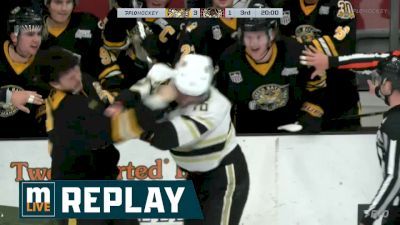 Replay: Home - 2024 Green Bay vs Muskegon | Apr 26 @ 7 PM
Replay: Home - 2024 Green Bay vs Muskegon | Apr 26 @ 7 PMApr 27, 2024
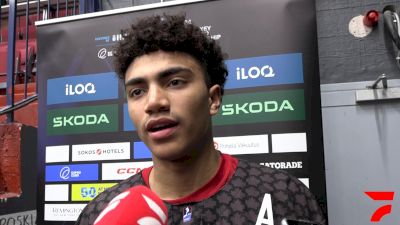 Malcolm Spence (2025) On His Goal Five Seconds In For Canada At The 2024 U18 World Championships
Malcolm Spence (2025) On His Goal Five Seconds In For Canada At The 2024 U18 World ChampionshipsApr 26, 2024
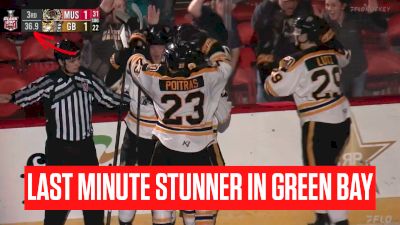 Jayson Shaugabay's Last-Minute Goal Extends Series For Green Bay Gamblers
Jayson Shaugabay's Last-Minute Goal Extends Series For Green Bay GamblersApr 25, 2024
 Replay: Home - 2024 Fargo vs Tri-City | Apr 24 @ 7 PM
Replay: Home - 2024 Fargo vs Tri-City | Apr 24 @ 7 PMApr 25, 2024
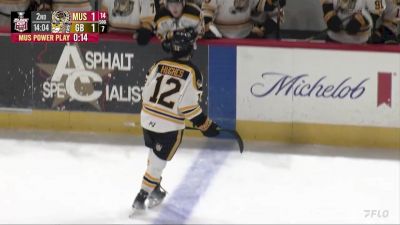 Replay: Home - 2024 Muskegon vs Green Bay | Apr 24 @ 7 PM
Replay: Home - 2024 Muskegon vs Green Bay | Apr 24 @ 7 PMApr 25, 2024
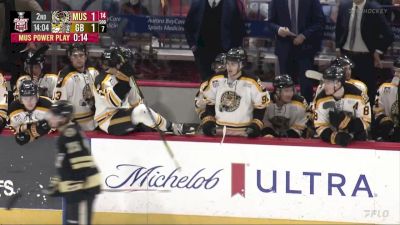 Replay: Away - 2024 Muskegon vs Green Bay | Apr 24 @ 7 PM
Replay: Away - 2024 Muskegon vs Green Bay | Apr 24 @ 7 PMApr 25, 2024
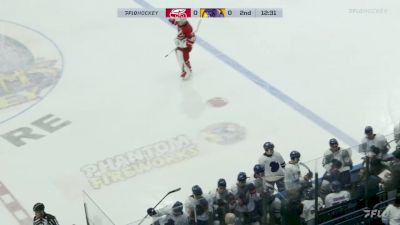 Replay: Home - 2024 Dubuque vs Youngstown | Apr 24 @ 7 PM
Replay: Home - 2024 Dubuque vs Youngstown | Apr 24 @ 7 PMApr 25, 2024
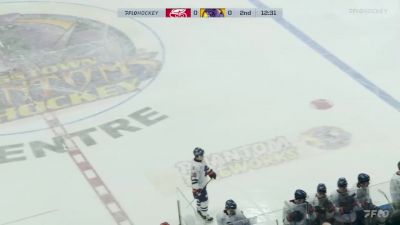 Replay: Away - 2024 Dubuque vs Youngstown | Apr 24 @ 7 PM
Replay: Away - 2024 Dubuque vs Youngstown | Apr 24 @ 7 PMApr 25, 2024
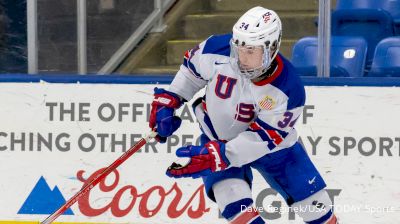 NHL Draft Prospects To Watch At U18 Worlds Highlighted By Eiserman, Iginla
NHL Draft Prospects To Watch At U18 Worlds Highlighted By Eiserman, IginlaApr 23, 2024